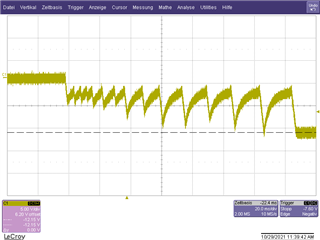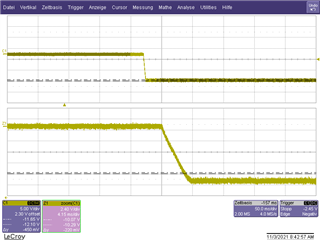Other Parts Discussed in Thread: LMR38020
Hi,
I have tried to use LMR38020EVM to generate -12V from 24V, load current is 0.5A. Schematic shown below:
I have found that the softstart of the chip brings big problem on the output.
If I start the chip with no load condition, the output curve looks as below.

I think it is inrush current triggers the overcurrent protection blanking time, but I do not understand why the capacitor kind of discharged after the voltage reaching the reference voltage.
If I connect the output with some load(120Ohm for example), the chip simply won't work, I saw a big jump in the input current from my power source, luckily the chip is not damaged, and the behavior is repeatable.
I I connect the load after start up and the voltage is stable, it works well. I measured the close loop bode, the phase margin is 55 degrees which are perfectly fine.
So it is really some issue with the soft-start, that kind of conflict with the IBB topology.
Can someone explain why it behaves like that?
Thank you very much
Best regards
Yibo


